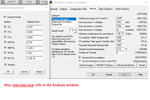FreeRiderCz
Junior Member level 3
well i get rid of some errors (obviously if i use hirearchical blocks i cant use PI regulator as name with "space" between PI and regulator) but now is there only problem in hirearchical block of PWM - nodes are floating....
here is curent version of my schematic
Moderator action: removed link to external file server
- - - Updated - - -
well i get rid of some errors (obviously if i use hirearchical blocks i cant use PI regulator as name with "space" between PI and regulator) but now is there only problem in hirearchical block of PWM - nodes are floating....
here is curent version of my schematic
View attachment singlephase voltage epsilon regulation.rar
here is curent version of my schematic
Moderator action: removed link to external file server
- - - Updated - - -
well i get rid of some errors (obviously if i use hirearchical blocks i cant use PI regulator as name with "space" between PI and regulator) but now is there only problem in hirearchical block of PWM - nodes are floating....
here is curent version of my schematic
View attachment singlephase voltage epsilon regulation.rar
Last edited by a moderator:
